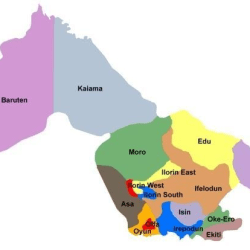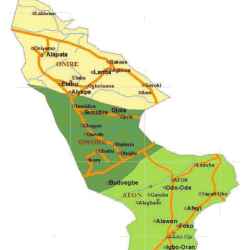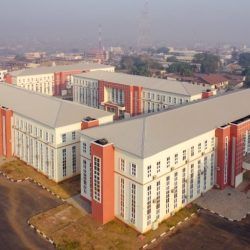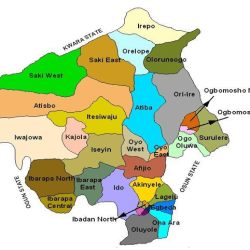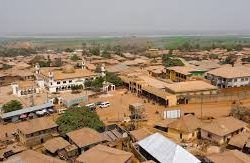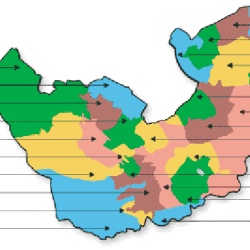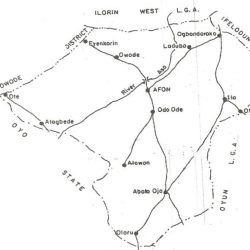The major towns in Baruteen are: Gure, Shiya, Boriya, Okuta, Ilesha, Gwanara, Nygurumi, Gwadabere and Tabera.
Baruteen Local Government Area was created from old Kaiama Local Government Area on August 27th, 1991.
Baruteen shares boundaries on the West with Benin Republic, in the South with Irepo Local Government Area of Oyo State and with Babana district in Borgu LGA of Niger State.
The Local Government Area has 11 wards.
Districts: Yashikira, Okuta, Gwanara and Ilesha Baruba.
Road Distance: From Ilorin to Kosubosu (LGA headquarters) 503km.
Population: 110,576 – (55,67 males, 54,889 females) 1991 census.
Important Markets: Chikanda, Gure, Shiya, Boriya, Okuta, Ilesha, Gwanara, Nygurumi, Gwadabere and Tabera.
Major Languages: Batonu is the major language, but Hausa, Fulani and Yoruba and Bokobaru are also spoken in the area.
Natural Resources: Yam, Maize, Guinea Corn, Melon, Cotton, Rice, Yam-flour.
Mineral Resources: Granite.
Major Festivals: Gani and Dokoru.
Tourist Attractions: Ninagarumi Fish Pond, Govette Core.
Kwara Local Government Areas
Kwara has 16 Local Government Areas, namely:
- Asa
- Baruten
- Edu
- Ekiti
- Ifelodun
- Ilorin East
- Ilorin South
- Ilorin West
- Irepodun
- Isin
- Kaiama
- Moro
- Offa
- Oke Ero
- Oyun
- Pategi

Kwara also has three senatorial districts, six federal constituencies, and 24 state constituencies.

More on Kwara
Kwara, a state in western Nigeria, has Ilorin as its capital.
The state was created on 27 May 1967, when the Federal Military Government of General Yakubu Gowon broke the four regions that then constituted the Federation of Nigeria into 12 states.
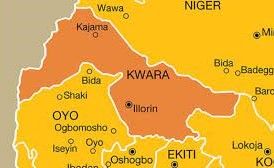

It is bordered by the states of Niger, Kogi, Ekiti, Osun, and Oyo, as well as the Republic of Benin.

Kwara has a land area of 36,825 square kilometers.

Kwara has several institutions of higher learning, such as the University of Ilorin, Kwara State University, Kwara State Polytechnic, Al-Hikmah University, Landmark University, and Crown Hill University.
The state has many tourist attractions, such as the Esie Museum of Stone Images, the Owu Waterfalls, the Imoleboja Rock Shelter, the Sobi Hill, and the Kainji Lake National Park.

Originally known as the West Central State which then became Kwara State – a local name derived from the Niger River. The State of Harmony as it is fondly called on account of the peaceful relations that exists among its multicultural and diverse population of over 2.5 million people.
Kwara State’s peaceful population, abundant natural resources, well-developed infrastructure and proactive investment-attraction policies have made it an attractive destination for investors.

The principal groups residing in Kwara State are the Yoruba, Nupe, Bariba, and Fulani. The skilled craftsmanship of the people of this central region has been evident for centuries. The most significant and most essential pottery workshops in Nigeria can be found in the capital city of Ilorin.

Proponents of the craft of traditional textile weaving are also very prominent: the Aso Oke style of hand-loomed cloth-making is world-renowned. The Yoruba are the largest population group in the south-western part of Nigeria, while the Fulani comprise a significant proportion of the population of the North.

Former Nigerian president Olusegun Obasanjo is a Yoruba; former president Umaru Yar’Adua was a Fulani. The Yoruba stem from an ancient civilization, the Oyo Empire, that came into existence in the eighth century with its headquarters in Ife, in what is now the neighbouring State of Osun.

Historian Robin Hallett has described the bronze and terracotta works of art known as the Ife heads as one of the ‘supreme artistic achievements of mankind.’ Oyo was at the height of its powers in the middle of the 18th century and was a trade conduit between the south and north.The Nupe Kingdom was located in the North of the Niger River.

According to Hallett, they were ‘industrial specialists,’ with skills including glass-making, weaving, tailoring, blacksmithing, and iron mining. One of the traditional skills of the Nupe is in the making of elaborately carved stools, using only one piece of wood. The Bariba people were once part of the Borgu Kingdom, and about 80% of this group now lives in neighbouring Benin.

The State’s rich and varied culture can be viewed at places such as the Esie Museum, Ogunjokoro, and the Imoleboja Rock Shelter. The Pategi regatta is a popular attraction, with boat owners proudly displaying their vessels and fishing and swimming contests. The Esie stone images are an important cultural artifact while various festivals are not only important to local communities but would prove fascinating to visitors.
The Awon and Egungun festivals are just two examples. The tragic end of explorer Mungo Park’s expedition down the Niger River is commemorated at Jebba where his boat is on display, and there is a monument.
Reference: kwarastate.gov.ng/discover-kwara/lifestyle/
